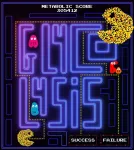(Press-News.org) Physicists in the Harvard John A. Paulson School of Engineering and Applied Sciences (SEAS) have created a compact laser that emits extremely bright, short pulses of light in a useful but difficult-to-achieve wavelength range, packing the performance of larger photonic devices onto a single chip.
Published in Nature, the research is the first demonstration of an on-chip, picosecond, mid-infrared laser pulse generator that requires no external components to operate. The device can make what’s called an optical frequency comb, a spectrum of light consisting of equally spaced frequency lines (like a comb), used today in precision measurements. The new laser chip could one day speed the creation of highly sensitive, broad-spectrum gas sensors for environmental monitoring, or new types of spectroscopy tools for medical imaging.
The paper’s senior author is Federico Capasso, the Robert L. Wallace Professor of Applied Physics at SEAS and the Vinton Hayes Senior Research Fellow in Electrical Engineering. Supported by the National Science Foundation and the Department of Defense, the research was a collaboration with the Schwarz group at Vienna University of Technology (TU Wien); a consortium of Italian scientists led by Luigi A. Lugiato; and Leonardo DRS Daylight Solutions led by Timothy Day.
“This is an exciting new technology that integrates on-chip nonlinear photonics to generate ultrashort pulses of light in the mid-infrared; no such thing existed until now,” Capasso said. “What’s more, such devices can be readily produced at industrial laser foundries using standard semiconductor fabrication.”
The mid-infrared is an invisible section of the electromagnetic spectrum that is leveraged today in environmental applications. Because many gas molecules like carbon dioxide and methane absorb mid-infrared light efficiently, this wavelength range has been an important tool in monitoring environmental gases, notably with quantum cascade laser technology that was pioneered by Capasso in the 1990s.
The new paper demonstrates a path to generating a broadband light source that could detect, for example, many different absorption fingerprints of gases in a single device.
“It’s a key step to creating what we call a supercontinuum source, which can generate thousands of different frequencies of light, all in one chip,” said Dmitry Kazakov, co-first author and research associate in Capasso’s group. “I think that’s a real possibility for the future of this platform.”
Fundamental to the new feat of nanophotonic engineering is the quantum cascade laser, which generates coherent beams of mid-infrared light by layering together different nanostructured semiconductor materials. Unlike other semiconductor lasers that have relied for decades on well-established techniques called mode-locking to generate their pulses, quantum cascade lasers remain notoriously difficult to pulse due to their inherently ultra-fast dynamics. Existing mid-infrared pulse generators based on quantum cascade lasers typically require complex setups to achieve pulsed emission as well as many discrete hardware components. They are also generally limited to a certain output power and spectral bandwidth.
The new pulse generator seamlessly combines, into a single device, several concepts in nonlinear integrated photonics and integrated lasers to make specific types of picosecond light pulses called solitons. In designing their chip architecture, the researchers took inspiration from a seemingly unrelated type of light-modulating device called a Kerr microresonator. Their creative thinking allowed them to skirt traditional techniques, like mode-locking, for pulse generation.
“Our measurements were non-traditional when it came to quantum cascade laser research,” said co-first author Theodore Letsou, a graduate student at MIT and research fellow in Capasso’s group. “We merged two types of fields and took what the Kerr resonator community does and applied it to our systems. That was an exciting process.”
"For me, the most significant impact of our new work – beyond the impressive physics – is the confidence it has given us in fabricating and operating multicomponent architectures, which is a capability that had remained a major challenge in mid-infrared integrated photonics until now," said paper co-author Benedikt Schwarz, professor at TU Wien. “We’re already developing new architectures to enable functionalities previously thought impossible."
The researchers drew on a foundational theory published in the 1980s that established a framework for passive Kerr resonators. One of the new paper’s co-authors is Luigi Lugiato, who worked on repurposing his original equation to describe the dynamics of the mid-IR laser system.
“This is an exciting culmination of a journey that began with the Lugiato-Lefever equation,” said Lugiato, professor emeritus at University of Insubria, Italy. “What started as a model for passive systems has evolved into a unified framework for soliton frequency combs in all kinds of cavities. That path led us to predict solitons in optically driven quantum cascade lasers above threshold – now confirmed by this experiment.”
The new mid-infrared laser can reliably maintain pulse generation for hours at a time. Crucially, it can also be mass-produced using existing industrial fabrication processes, which could greatly increase the speed of its widespread adoption. The device is made of a ring resonator that can be externally driven; an on-chip laser that drives the ring resonator; and a second active ring resonator that acts as a filter. The chips were made at TU Wien.
“This technology promises to be a real game-changer in the field of mid-infrared spectroscopy,” said paper co-author Timothy Day, Senior Vice President and General Manager of Leonardo DRS’ Daylight Solutions business unit. “The ability to leverage existing fabrication processes to produce these devices in commercial volumes could really enable what’s next in several markets, including environmental monitoring, industrial process control, life sciences research and medical diagnostics.”
The research is based on work supported by the National Science Foundation under Grant No. ECCS2221715. Other sources of funding included the Department of Defense through the National Defense Science and Engineering Graduate Fellowship Program, and the European Research Council.
Harvard’s Office of Technology Development has protected the innovations associated with this research and is exploring commercial opportunities.
Other co-authors of the paper are Marco Piccardo, Lorenzo L. Columbo, Massimo Brambilla, Franco Prati, Sandro Dal Cin, Maximilian Beiser, Nikola Opačak, Pawan Ratra, Michael Pushkarsky, and David Caffey.
END
A compact, mid-infrared pulse generator
Single chip generates short bursts of light for sensing, spectroscopy
2025-04-16
ELSE PRESS RELEASES FROM THIS DATE:
Sex-based differences in binge and heavy drinking among US adults
2025-04-16
About The Study: This analysis found that past-month binge drinking among young adult females in 2021-2023 was higher than males, reversing 2017-2019 patterns, whereas males in other age groups continued to binge and heavy drink at higher rates. These findings may be due to more rapid decreases in binge drinking over time among young adult males relative to females, or to plateauing or increases in binge drinking among females. Further investigation using other nationally representative surveys is needed to elucidate these explanations.
Corresponding Author: To contact the corresponding author, Bryant Shuey, MD, MPH, email bryant.shuey@pitt.edu.
To ...
Using vibrations to see into Yellowstone's magma reservoir
2025-04-16
Beneath Yellowstone lies a magma reservoir, pulsing with molten and superheated rock and exsolved gases. Scientists have long known about the chamber’s existence, but have yet to precisely locate its uppermost boundary and characterize the contents of the chamber closest to the surface—information crucial for understanding the potential perils this volcanic feature poses.
That changed this week with new research by seismologists from the University of Utah and the University of New Mexico (UNM) who used hundreds of portable seismometers and a mechanical vibration source to render 2D seismic reflection images of the ground beneath Yellowstone’s caldera.
Using ...
From disorder to order: scientists rejuvenate aging batteries
2025-04-16
A team of scientists led by Prof. LIU Zhaoping at the Ningbo Institute of Materials Technology and Engineering (NIMTE) of the Chinese Academy of Sciences, in collaboration with researchers from the University of Chicago and other institutions, has developed zero thermal expansion (ZTE) materials. This innovation has achieved nearly 100% voltage recovery in aging lithium-ion batteries (LIBs), as detailed in a study published in Nature.
LIBs have become increasingly essential in the markets for electric vehicles and aircraft. Lithium-rich layered oxide cathode materials can deliver record capacities exceeding 300 mAh/g, thanks to revolutionary oxygen-redox (OR) ...
Metabolism shapes life
2025-04-16
New research from Barcelona and Dresden: Glycolysis — the process of converting sugar into energy — plays a key role in early development.
More than fuel: Glycolysis doesn’t just power cells — it helps steer them toward specific tissue types at critical moments in development.
Better embryo models: Stem-cell–based embryo models that rely on glycolysis form structures more similar to natural embryos.
Predict and control development in a dish: These findings improve our ability to predict and control how stem-cell-based embryo models will develop, ...
AI–enabled prediction of heart failure risk from single-lead electrocardiograms
2025-04-16
About The Study: Across multinational cohorts, a noise-adapted artificial intelligence (AI)-electrocardiogram (ECG) model estimated heart failure risk using lead I ECGs, suggesting a potential heart failure risk-stratification strategy requiring prospective study using wearable and portable ECG devices.
Corresponding Author: To contact the corresponding author, Rohan Khera, MD, MS, email rohan.khera@yale.edu.
To access the embargoed study: Visit our For The Media website at this link https://media.jamanetwork.com/
(doi:10.1001/jamacardio.2025.0492)
Editor’s ...
Immediate skin-to-skin contact in very preterm neonates and early childhood neurodevelopment
2025-04-16
About The Study: In this randomized clinical trial, 2 hours of mother-neonate skin-to-skin contact (SSC) in the delivery room did not enhance neurodevelopmental outcomes at 2 to 3 years of age. However, the SSC group demonstrated improved breastfeeding practices up to 12 months compared with standard care, suggesting that the feasible and low-cost SSC intervention should be encouraged in clinical practice.
Corresponding Author: To contact the corresponding author, Laila Kristoffersen, RN, PhD, email laila.kristoffersen@ntnu.no.
To ...
‘Cosmic radio’ could find dark matter in 15 years
2025-04-16
Scientists have designed a ‘cosmic radio’ detector which could discover dark matter in 15 years.
Published today in Nature, scientists at King’s College London, Harvard University, UC Berkley and others have shared the foundation of what they believe will be the most accurate dark matter detector to date.
Dark matter is the unobservable form of matter could make up as much as 85% of mass in the Universe, but scientists are not sure exactly what it is.
Axions are one of the leading ...
Supercharged mitochondria spark aging-related blood disorders
2025-04-16
As we age, blood stem cells, the essential source of new blood cells in the body, can accumulate genetic mutations. These mutations can give the cells a growth advantage, laying the foundation for developing serious health conditions. Now, scientists at The Jackson Laboratory (JAX) have not only discovered the mechanism that fuels their unchecked growth but have also found a way to stop it.
Led by Jennifer Trowbridge, professor and The Dattels Family Chair at JAX, the study reported today in the April 16 issue of Nature Communications reveals that a common aging-associated mutation in the gene Dnmt3a boosts the power-generating function of mitochondria ...
New human “multi-zonal” liver organoids improve injury survival in rodents
2025-04-16
One reason why our livers excel at clearing waste from our blood system is that the organ functions according to three key “zones” that perform specific major tasks. So, if scientists hope to create self-growing patches of liver organoid tissue that could help repair damaged organs, it’s important that the lab-grown tissue faithfully reproduce such zones.
In a groundbreaking paper published April 16, 2025, in the prestigious journal Nature, a team of organoid medicine experts at Cincinnati Children’s reports achieving just such a milestone – made from human stem cells. When these humanized organoids were transplanted into rodents whose own liver-bile duct system ...
Scientists achieve record-breaking growth in miniature, functional liver models
2025-04-16
Replicating the liver’s complexity
While organoids aim to mimic human organs, the liver’s repertoire of complex functions – and thus the energy it needs to operate – have made it challenging for researchers to grow organoids that proliferate and fully function, says Sato. When prioritizing growth and survival in laboratory settings, hepatocytes, the liver’s main cells, eventually transformed into cells resembling cholangiocytes, which line the bile duct. Hepatocyte functions only lasted 1-2 weeks at most.
The study team, led by Ryo Igarashi and Mayumi Oda at the Keio University School of Medicine, ...
LAST 30 PRESS RELEASES:
New study overturns long-held model of how plants coordinate immune responses.
New AI model predicts disease risk while you sleep
Scientists discover molecular ‘reshuffle’ and crack an 80-year-old conundrum
How stressors during pregnancy impact the developing fetal brain
Electrons lag behind the nucleus
From fungi to brain cells: one scientist's winding path reveals how epigenomics shapes neural destiny
Schizophrenia and osteoporosis share 195 genetic loci, highlighting unexpected biological bridges between brain and bone
Schizophrenia-linked genetic variant renders key brain receptor completely unresponsive to both natural and therapeutic compounds
Innovative review reveals overlooked complexity in cellular energy sensor's dual roles in Alzheimer's disease
Autism research reframed: Why heterogeneity is the data, not the noise
Brazil's genetic treasure trove: supercentenarians reveal secrets of extreme human longevity
The (metabolic) cost of life
CFRI special issue call for papers: New Frontiers in Sustainable Finance
HKU Engineering scholar demonstrates the smallest all-printed infrared photodetectors to date
Precision empowerment for brain "eavesdropping": CAS team develops triple-electrode integrated functional electrode for simultaneous monitoring of neural signals and chemical transmitters during sleep
Single-capillary endothelial dysfunction resolved by optoacoustic mesoscopy
HKU three research projects named among ‘Top 10 Innovation & Technology News in Hong Kong 2025’ showcasing excellence in research and technology transfer
NLRSeek: A reannotation-based pipeline for mining missing NLR genes in sequenced genomes
A strand and whole genome duplication–aware collinear gene identification tool
Light storage in light cages: A revolutionary approach to on-chip quantum memories
Point spread function decoupling in computational fluorescence microscopy
BacPhase: Long-insert paired-end sequencing for bin marker construction and genome phasing
GmWOX1 regulates the mediolateral polarity of compound leaves in soybean
ChargeFabrica: An open-source simulation tool that aims to accelerate search for high performance perovskite solar cells
High levels of ADAR overexpression induce abundant and stochastic off-target RNA editing in rice protoplasts
On-demand upgraded recycling of polyethylene and construction of sustainable multifunctional materials based on the "LEGO" strategy
New "Stomata in-sight" system allows scientists to watch plants breathe in real-time
Anorexia nervosa may result in long-term skeletal muscle impairment
Narrative-based performance reviews deemed fairest by employees
New insights reveal how advanced oxidation can tackle emerging water pollutants
[Press-News.org] A compact, mid-infrared pulse generatorSingle chip generates short bursts of light for sensing, spectroscopy








